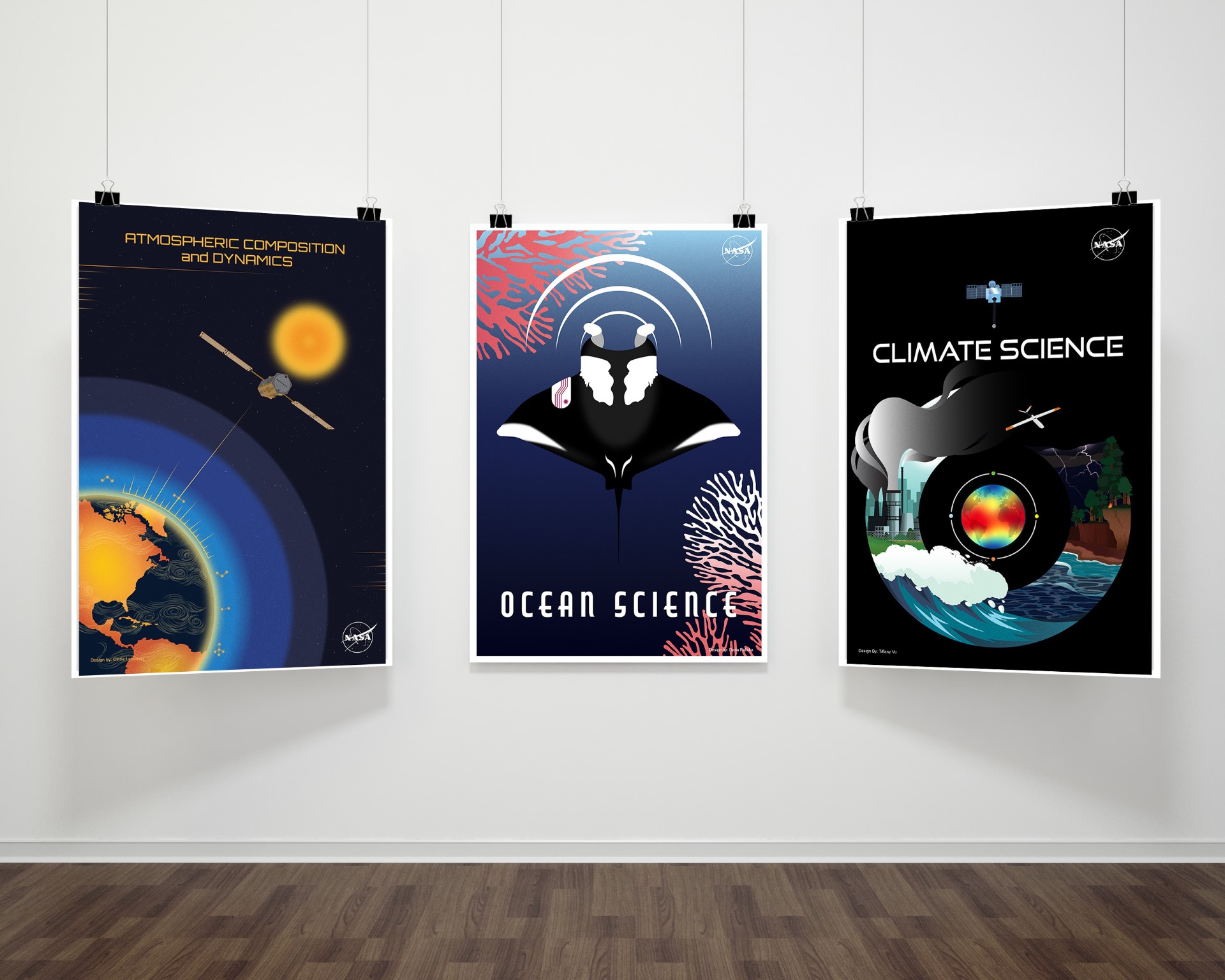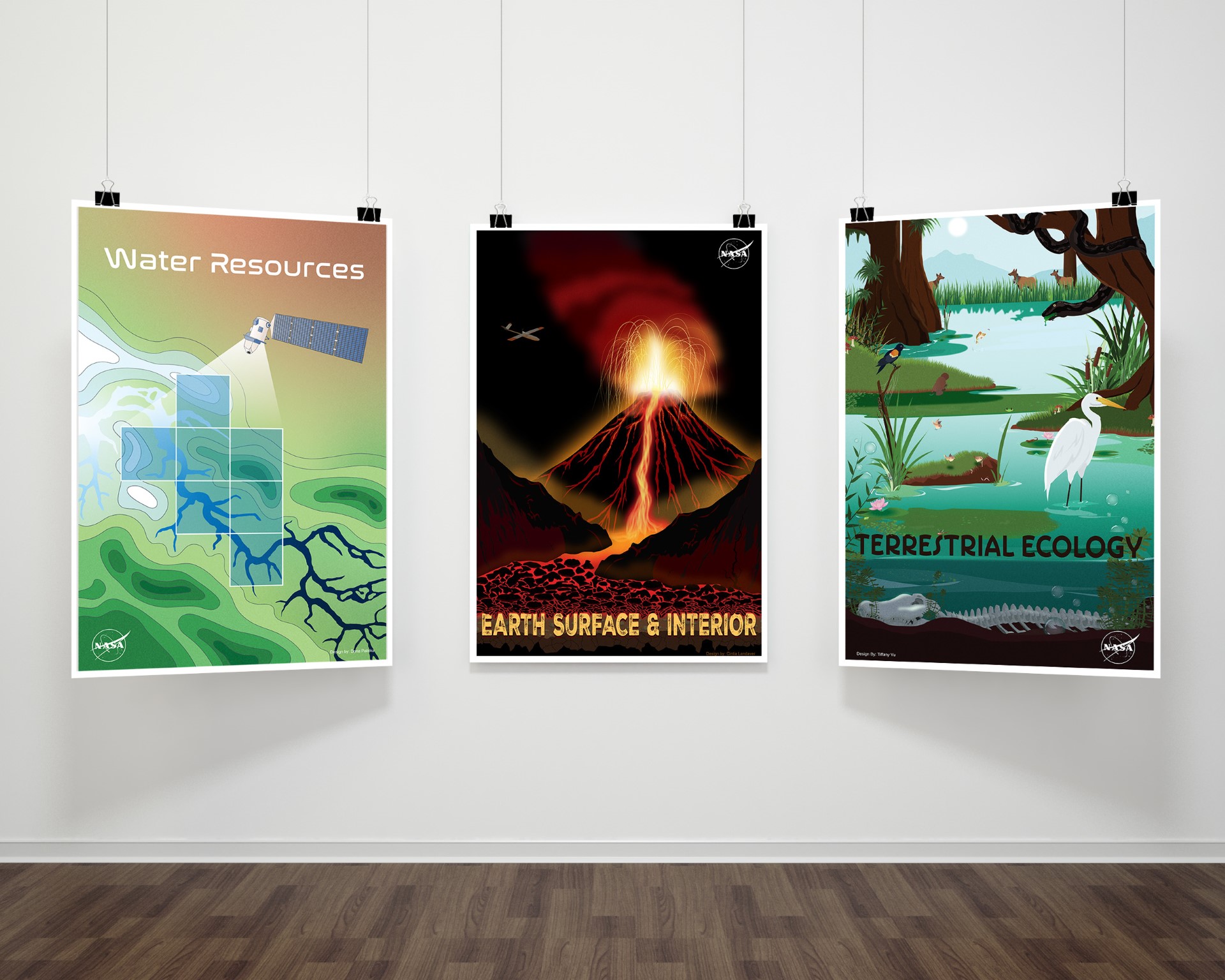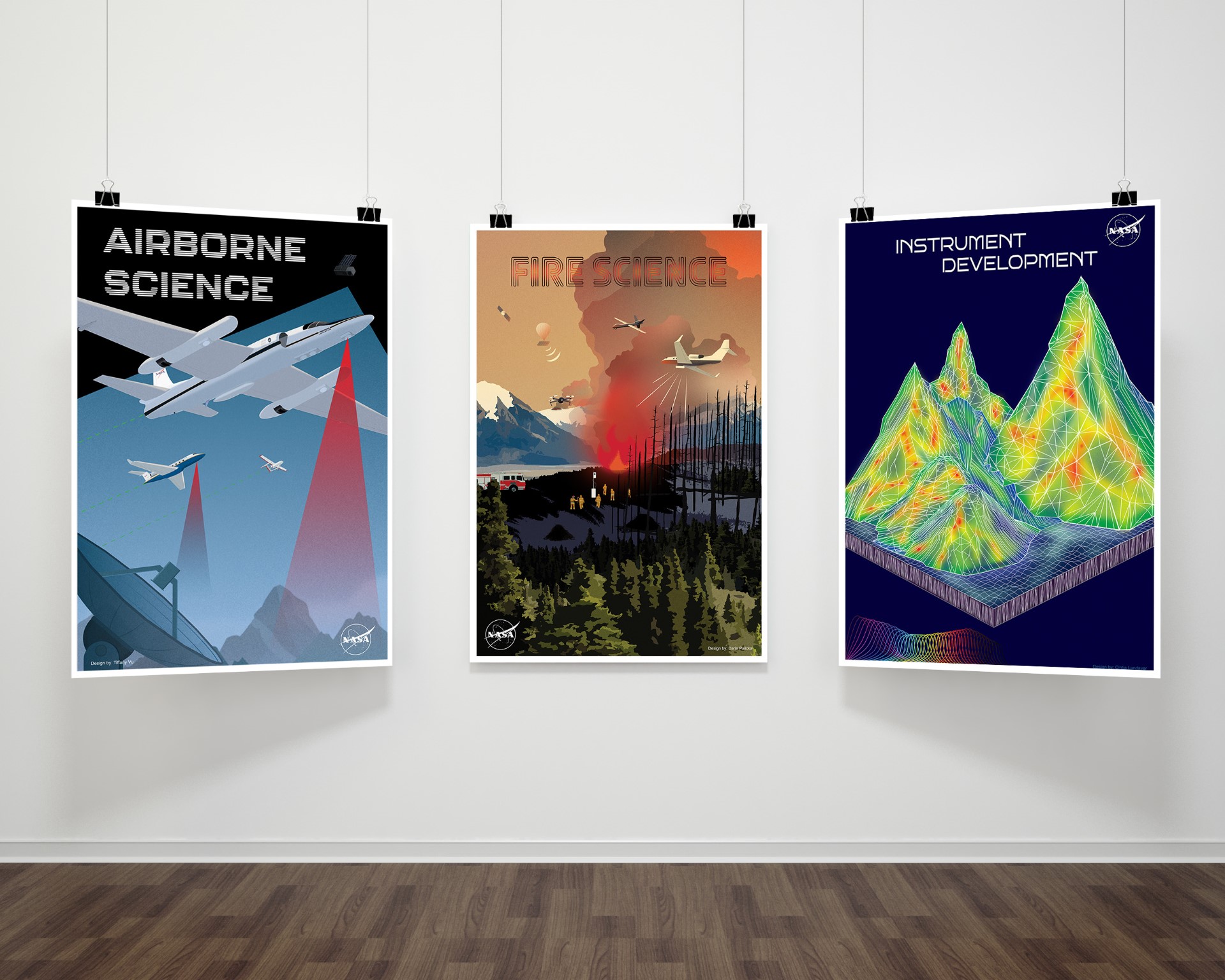Mission College Graphic Design Students Showcase NASA Projects

FOR IMMEDIATE RELEASE
Santa Clara, California - Three accomplished graphic design students from Mission College – Cintia Landaver, Daria Palicka, and Tiffany Vu – recently presented their cutting-edge work at an event with NASA at the AMES Research Center in Mountain View. The presentation aimed to share their design process with NASA scientists and engineers, offering insights into their innovative approach to visual communication.
After earning their Associate of Science (AS) or completing a Graphic Design certificatee, the students successfully completed paid internships at NASA's Earth Sciences Division of Ames Research. Their primary goal was to gain practical work experience while cultivating a valuable relationship with NASA.
The core assignment asked of them was to develop nine posters to replace outdated graphics in NASA Ames buildings, each representing a specific department within the Earth Science Division. Additionally, they were tasked with creating the logo identity for the funded NASA Mission, STRATO, and refreshing the Earth Sciences Division logo. They shared their work on December 6, 2023.
"This experience at NASA was an incredible fusion of artistic expression and scientific communication," Landaver said. "It was enjoyable to lend my skills in visual communication to help further the important work of exploration and discovery."
Hailing from El Salvador, Poland, and California, respectively, Landaver, Palicka, and Vu brought unique backgrounds and perspectives to the projects, enriching the collaborative process with their diverse experiences and shared passion for graphic design.
These projects included:
- Ocean Science Poster: Initial concepts ranged from minimalistic to abstract representations. The final design featured a dynamic composition with migrating manta rays, emphasizing the impact of marine life and climate change.
- Atmospheric Composition and Dynamics Poster: Concepts explored atmospheric layers, satellites, and global climate. The final design utilized a z-like composition, accurately representing continents, wind patterns, and atmospheric layers.
- Climate Science Poster: Explored physical processes affecting climate, emphasizing
the interconnectedness of various elements. The final design incorporated smoke, volume,
shape, and visual interest, depicting the impact of climate on Earth.

Ocean Science Poster, Atmospheric Composition and Dynamics Poster, as well as the Climate Science Poster. - Water Resources Poster: Focused on river basins and water cycles, using a satellite and scanning grid as central elements. The final design featured a vibrant composition with river and scanning processes as focal points.
- Earth Surface and Interior Poster: Explored concepts inspired by volcanic eruptions, emphasizing the life cycle of lava flow. The final design included dramatic elements like seismic cracks and gases, creating a visually impactful composition.
- Terrestrial Ecology Poster: Explored wetlands, animal tracking, and emissions of methane as key themes. The final design incorporated detailed textures and additional elements, encouraging viewers to discover hidden details.

- Fire Science Poster: Explored joint efforts to prevent, detect, and fight wildfires, incorporating elements like UAVSAR, STRATO, and firefighters. The final design depicted a detailed illustration of collaborative firefighting efforts in a remote area.
- Instrument Development Poster: Focused on hyperspectral imaging and terrain scanning, using abstract concepts and wireframe mountains. The final design merged concepts, avoiding confusion with topographic maps and emphasizing the power of sensor colors.
- Airborne Science Poster: Featured aircraft in various sketches, emphasizing the stack of observations from ground to space. The final design showcased different aircraft types, providing a dynamic and informative visual.

In addition to the nine posters, the students also developed logos for the STRATO mission, showcasing their ability to blend creativity with specific scientific requirements. The Strategic Tac Radio and Tac Overwatch (STRATO) system is designed to provide real-time fire observations and last-mile communications with firefighters from stratospheric platforms.
"From initial sketches to the final design, our goal was to capture scientific concepts and cutting-edge technology in a visually compelling way. It's extremely gratifying to work on a project like that, where engaging storytelling and effective visual communication come together to create a meaningful connection with the viewers,” Palicka said.Jeanine Flores, their instructor, commended their dedication and creativity, stating, "Their work conveys scientific concepts in an accessible yet compelling manner, effectively engaging a diverse array of audiences from scientists and engineers to stakeholders and the general public through its presentation.
Mission College's Graphic Design & Multimedia Department provides students with the opportunity to follow their passion for graphic design, web development, typography, photography, and video production. Flexible class options that suit schedules, whether online, or in-person, are available to make this a good fit for all.
"The Graphic Design program has been the perfect launchpad, equipping me with the skills and creativity process needed for the challenges and opportunities I encountered while working on NASA projects," Vu said.
Benjamin Demers
Director of Marketing and Public Relations
[email protected]
About Mission College
Mission College is a leading institution of higher education dedicated to providing
accessible, high-quality education that empowers students to succeed.
With a commitment to student success, equity, and innovation, Mission College offers
a diverse range of academic programs, exceptional faculty, and supportive services
to foster a thriving educational community.
Learn More About Mission

